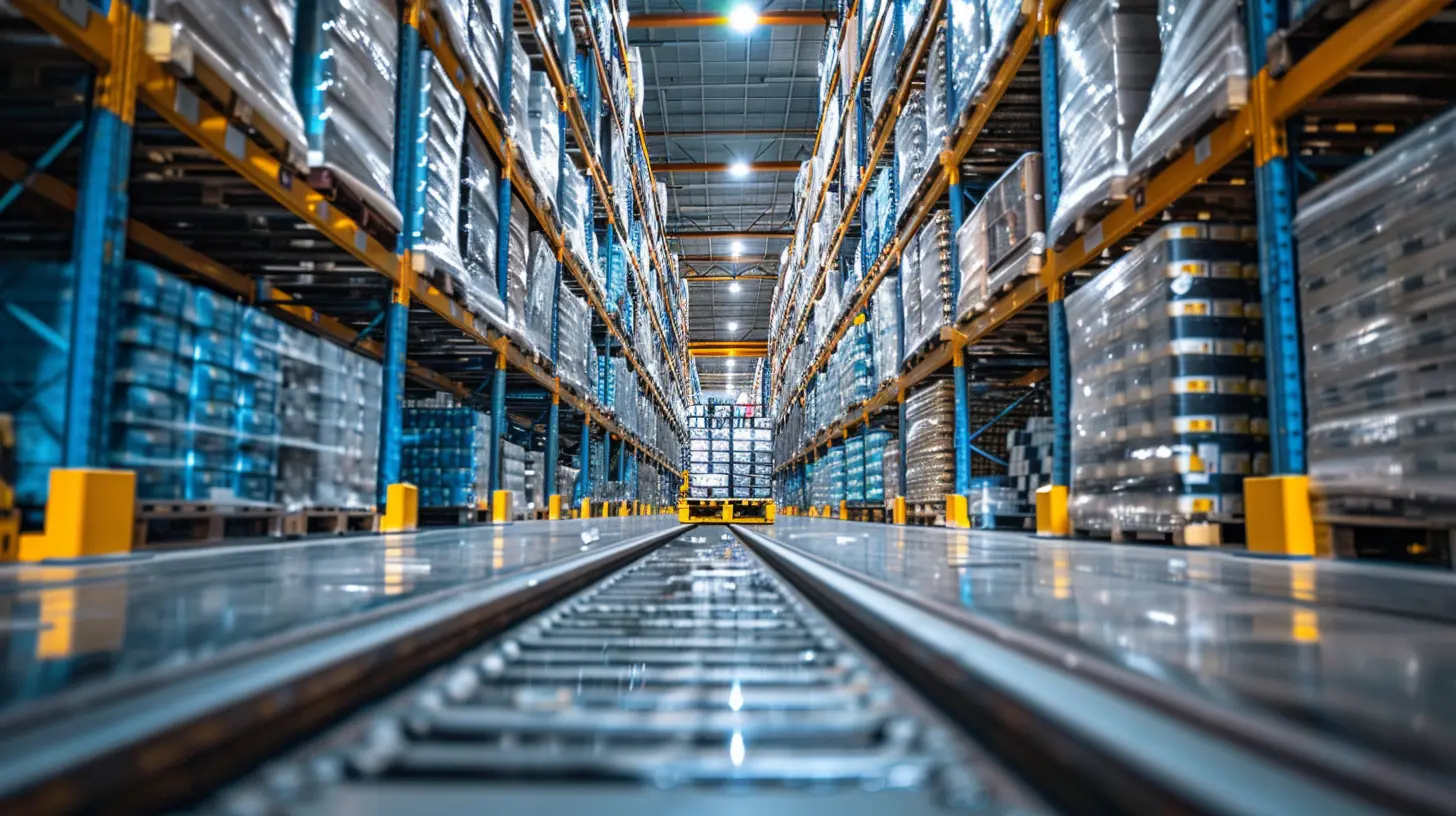How to Mitigate the Impact of Supply Chain Disruptions with Data
26 October 2025
Imagine you're steering a ship through a stormy sea. The winds are howling, the waves are crashing, and visibility? Practically zero. That ship, my friend, is your business. The storm? It’s a supply chain disruption. But there's good news—you’ve got a compass, a radar, and a GPS. That lifeline is data.
In this increasingly unpredictable world, where a single hiccup on the other side of the globe can halt production lines and empty store shelves, data is no longer a luxury—it’s a lifeline. So, let’s break this down. Let’s walk through how you can harness the power of data to tame the chaos and keep your business running smoothly, even when your supply chain starts throwing tantrums.
The Fragile Dance of Modern Supply Chains
Supply chains today are like intricate spiderwebs—delicate, interconnected, and stretched across the globe. One snap in the web—a natural disaster, a geopolitical rift, a factory shutdown due to a health crisis—and the entire structure shudders.These disruptions aren’t just possibilities anymore. They're realities. And if you're relying on intuition or outdated spreadsheets to keep things moving, you're essentially sailing blind.
So, what’s the secret weapon forward-thinking businesses are using? Yep, you guessed it. Data.
Why Data is the Hero in This Saga
Let’s cut to the chase: Data gives you eyes. It spots trouble long before you feel the tremors. It speaks in patterns, trends, and probabilities. With it, you can anticipate delays, reroute shipments, reallocate resources, and even renegotiate contracts.But raw data is just noise. The magic happens when you gather it properly, analyze it smartly, and act on it decisively.
Let’s crack open the playbook.
Step 1: Embrace Real-Time Data Like It’s Your Best Friend
Let’s be real—waiting for a weekly report in times of crisis is like trying to stop a leak with a sponge made of paper. Real-time data is the name of the game.What Does This Look Like?
- Real-time GPS tracking for shipments- Up-to-the-minute inventory counts
- Instant alerts from suppliers on delays or shortages
- Social media sentiment tracking (seriously, customers tweet faster than they email!)
With dashboards and tools that update in real time, you’re not just reacting—you’re responding. Swiftly and smartly.
Step 2: Use Predictive Analytics to See Around Corners
Wouldn't it be nice to have a crystal ball? While we can't exactly gaze into the future, predictive analytics comes pretty close. It lets you anticipate issues before they actually strike.Here’s How It Helps:
- Demand forecasting: Know when spikes are coming (hello, holiday rush).- Risk modeling: See which suppliers are more likely to falter.
- Seasonal trends: Plan ahead for the ebb and flow.
Let the data whisper secrets of tomorrow so you can prepare today.
Step 3: Map Your Supply Chain (No, Really. Map It.)
Remember that old saying—you can’t fix what you can’t see? That holds true here. Many businesses don’t actually know where the weak links lie… until those links snap.How to Build a Supply Chain Map:
- Identify all suppliers, right down to Tier 3 and 4 if possible.- Track components from origin to your doorstep.
- Note transport modes, ports of entry, and transit points.
This visualization isn’t just cool (though it is). It’s critical for spotting bottlenecks, single points of failure, and potential workarounds.
Step 4: Collaborate Like a Pro (And Share the Data!)
In supply chain management, flying solo is a guaranteed way to crash. You need your partners, vendors, and even customers rowing in the same direction.Get Everyone on the Same Page:
- Share demand forecasts with suppliers.- Sync production schedules across your network.
- Use collaborative platforms everyone can access.
When everyone has the same data, decisions happen faster and with more confidence. It’s like a jam session where everyone’s playing in key—harmony all around.
Step 5: Invest in AI and Machine Learning (Don’t Panic, It’s Simpler Than You Think)
AI isn’t just for tech giants anymore. Today, plenty of accessible platforms can crunch your data, spot inefficiencies, and offer decisions faster than you can say "backorder."Think AI Is Overhyped? Think Again.
- It can automate simple decision-making (e.g., rerouting shipments).- It spots patterns humans might miss.
- It learns—as in, gets better over time.
Using AI in your supply chain is like hiring a super-smart intern who doesn’t sleep, doesn’t complain, and gets smarter every week.
Step 6: Scenario Planning—Your Supply Chain’s Fire Drill
Here’s the truth: Not every disruption can be prevented. But you can always be prepared. That’s where scenario planning comes in. It’s your “what if?” playbook.Build Your "Break Glass in Case of Emergency" Plan:
- What if Port A shuts down?- What if Supplier X goes bankrupt?
- What if demand suddenly doubles?
Simulate these scenarios using your data. Know your escape routes before the fire even starts.
Step 7: Keep Your Data Clean and Centralized
Data is only as good as its quality. If your info is outdated, scattered across platforms, or riddled with errors, you’re making business decisions based on fiction.It’s like cooking with spoiled ingredients—no matter how good the recipe is, the dish is gonna be bad.
What To Do:
- Use cloud-based systems for centralized access.- Regularly audit your data for accuracy.
- Train your team—everyone is a keeper of the data.
A clean stream of data is your golden ticket to making sharp, timely moves.
Step 8: Monitor Global Events (Yes, Even the Weather)
It's not just about your suppliers anymore. Political unrest, natural disasters, labor strikes—these global tremors echo through your supply chain.And guess what? Many tools now offer threat intelligence that pulls from news, government updates, and AI-driven feeds.
Tips for Staying Informed:
- Set up Google Alerts for key regions and industries.- Subscribe to supply chain risk platforms.
- Follow trusted analysts and news sources.
With this foresight, you're not just watching the world—you’re preparing for it.
Step 9: Build Buffers But Don’t Go Overboard
Data helps you strike the right balance between being prepared and being bloated. Sure, buffer inventories sound comforting—until they start bleeding you dry in storage costs.Let data determine where, when, and how much buffer makes sense.
Data-Backed Buffering:
- Identify high-risk SKUs- Track historical demand surges
- Analyze supplier lead times
It’s like packing an umbrella based on the forecast, not your mood.
Step 10: Continuously Improve and Adapt
Think of your supply chain like a living thing. It breathes. It reacts. And it needs constant nurturing.The moment you think your systems are "good enough," the market will throw a curveball that proves otherwise.
Keep Evolving:
- Track KPIs like OTIF (On Time In Full), Lead Time Variance, and Forecast Accuracy.- Benchmark your performance across the industry.
- Use feedback loops from every disruption to get smarter.
Remember, what doesn’t break you should teach you.
Wrapping It Up: Turning Chaos Into Clarity
Supply chain disruptions are inevitable. Some are small ripples. Others are full-blown tsunamis. The difference between sinking and sailing is how quickly and wisely you can respond.And that’s where data shines.
Like a lighthouse in the fog, it helps you see what’s coming. With the right systems in place, you don't just dodge disasters—you turn them into competitive advantages.
So, next time the global supply chain sneezes, your business won’t catch a cold. It’ll already be two steps ahead, fueled by insights, guided by patterns, and driven by data.
all images in this post were generated using AI tools
Category:
Supply Chain ManagementAuthor:

Caden Robinson
Discussion
rate this article
1 comments
Kira McTier
This article provides practical insights on leveraging data to address supply chain disruptions. It's a timely reminder that proactive data analysis is crucial for maintaining resilience in today’s unpredictable market.
November 2, 2025 at 3:26 AM

Caden Robinson
Thank you for your feedback! I'm glad you found the insights valuable for enhancing supply chain resilience.


